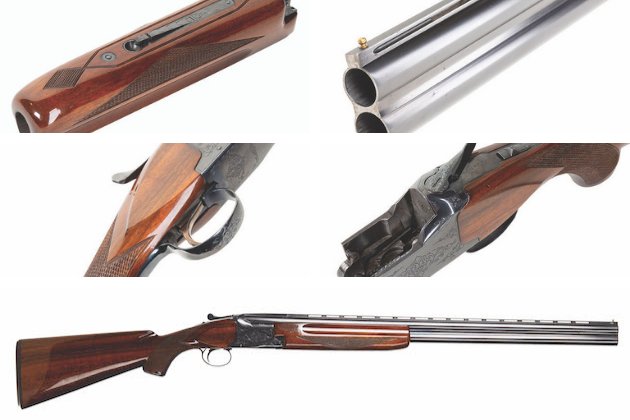The Winchester 101 – one of the classics
The Winchester 101 has had many incarnations, including the Game, and has built a loyal following over the years, says Charles Smith Jones

The Winchester 101 entered a production run which started in 1963 and went on for over 20 years. It was initially just produced in a game version (which was marketed as the Field in the USA), and the example pictured appears to have been made towards the middle of production as Winchester eventually introduced multichoke models during the 1970s.
Although it is often possible to date a gun from its serial number, sadly it appears that no records are available for Winchester shotguns that were made in Japan.

Winchester 101 Game
The Winchester 101 Game was based on a boxlock action with an engraved receiver, single selective trigger, auto-ejectors and the barrels featured a ventilated rib.

Japan crafted chequered French walnut
The automatic safety doubled as a barrel selector and, at first, only fixed chokes were available. In most cases the woodwork is of hand-chequered French walnut.
The gun quickly evolved from this basic model as Winchester fought to retain its share of the shotgun market against its rivals Remington and Browning.
Since then, the Model 101 has appeared in a number of different variations under a wide number of names, the first of which was a Magnum in 12 and 20bore with 3in chambers and 30in or 26½in barrels respectively. The slightly later Pigeon grade was similar to the standard Game version but featured Winchoke tubes, more ornate engraving and specially selected woodwork.

Boxlock action with engraved receiver
There was also a 26½in Skeet model in 12 or 20-bore, and a Trap with 30 or 32in barrels, available in 12-bore only. Very rarely a single-barrelled 101 might turn up. These were also sold as Trap guns and were first produced with multi-barrel sets for different types of targets, but later came offered with multichokes. Aimed at the US market, one would be a very rare find in a UK gun shop.

Ventilated rib on over-and-under barrels
Old and new
By 1984 production of all the preceding basic models had ceased, since when Winchester relaunched the design as the XTR or Diamond Grade, which quickly became a top seller in the UK. For the US market, there was also a 101 Quail Special in 28-bore or .410, followed by the Pigeon Grade Lightweight in 20-bore only, which had a limited production run in 1995 and 1996.
The Model 101s next reincarnation with its original title came in 2009 and 2010 with the Pigeon Grade Sporting, very much a clay shooter’s gun with longer barrels, an adjustable comb and high-quality wood.
There have been other variations on the theme since, all built to a similar design, but bearing different names. The Winchester catalogue still features a selection of Model 101s. Although the modern guns share some features with their illustrious predecessors, they are built using more modern techniques in Belgium rather than Japan, and generally have a much lower profile and different feel.

Auto safety doubles as barrel selector
By modern standards the original Model 101s may appear rather bulky but they are solidly built and typically well made, and offered superb value to their first buyers. They still retain a loyal following and even today the earlier examples hold their value well. It should come as no surprise, though, that spare parts can occasionally be difficult to source given the age of these guns.
The Model 101 may have dated slightly but it remains an attractive gun that handles well. It has stood the test of time and can be considered one of the classics. Should you come across one that has been looked after, pick it up, try the fit and feel, and you may just join the ranks of its admirers. ‘

Winchester 101
Winchester 101 tech specs
- Configuration Over-and-under
- Action Boxlock
- Choke Fixed or multichoke
- Chamber 2¾in (12 and 28-bore) or 3in (20-bore and .410)
- Barrel length 26½in–30in
- Ejector/non-ejector Ejector
- Safety catch Auto (Game model)
- Weight (12-bore) 7lb 8oz approx, depending on barrel length
- Available in calibres 12, 20 and 28-bore and .410
- Cost new N/A
- Cost used From around £500 and upwards depending on age and condition








